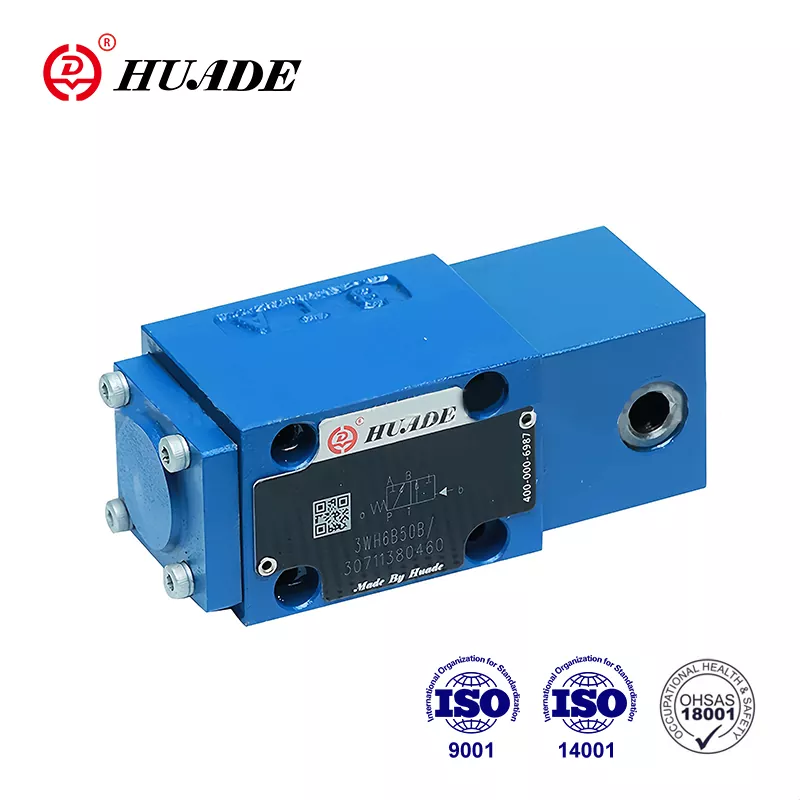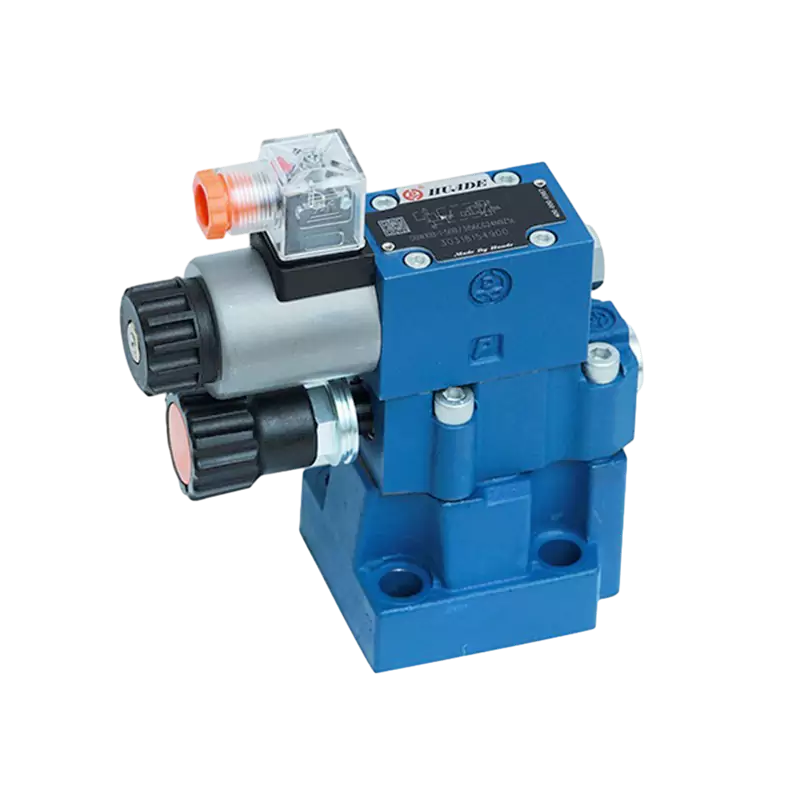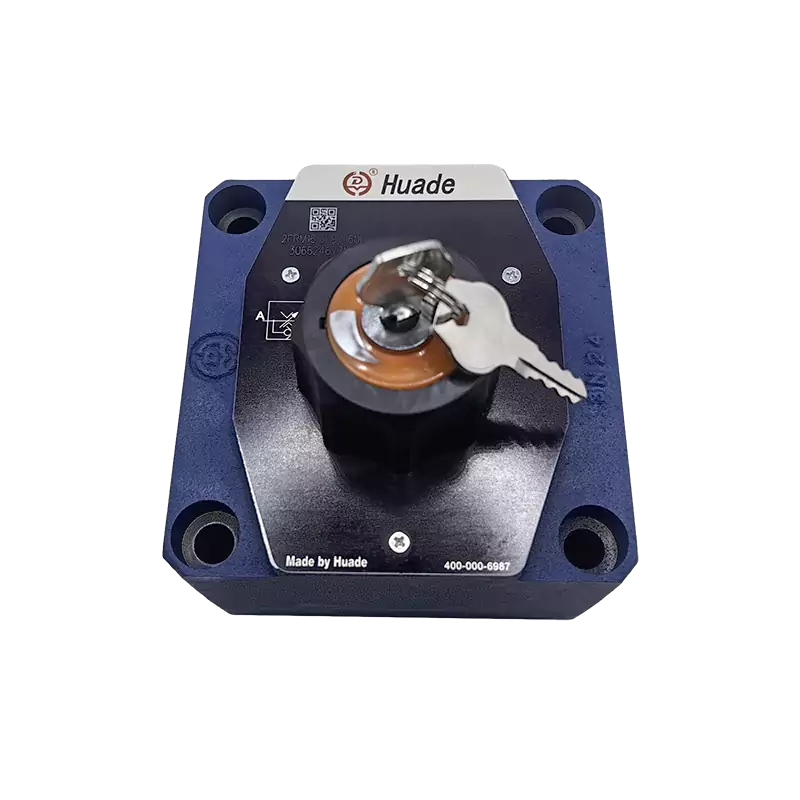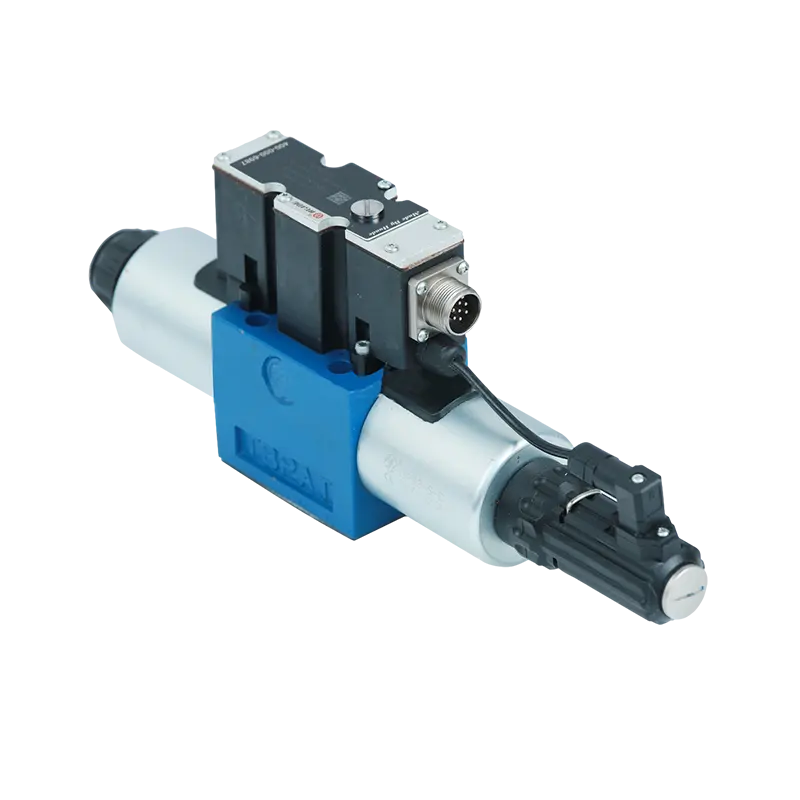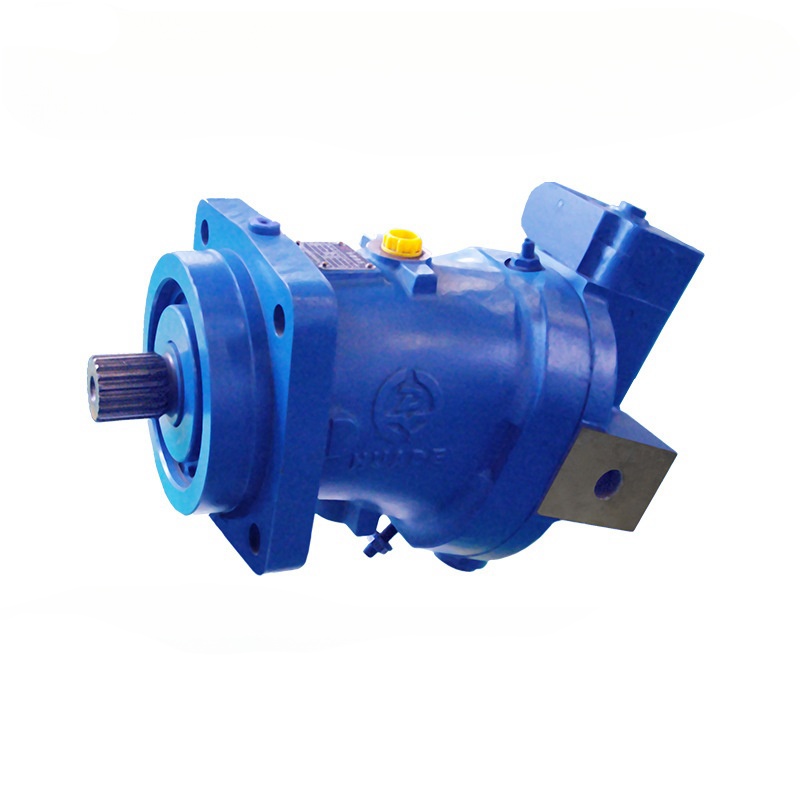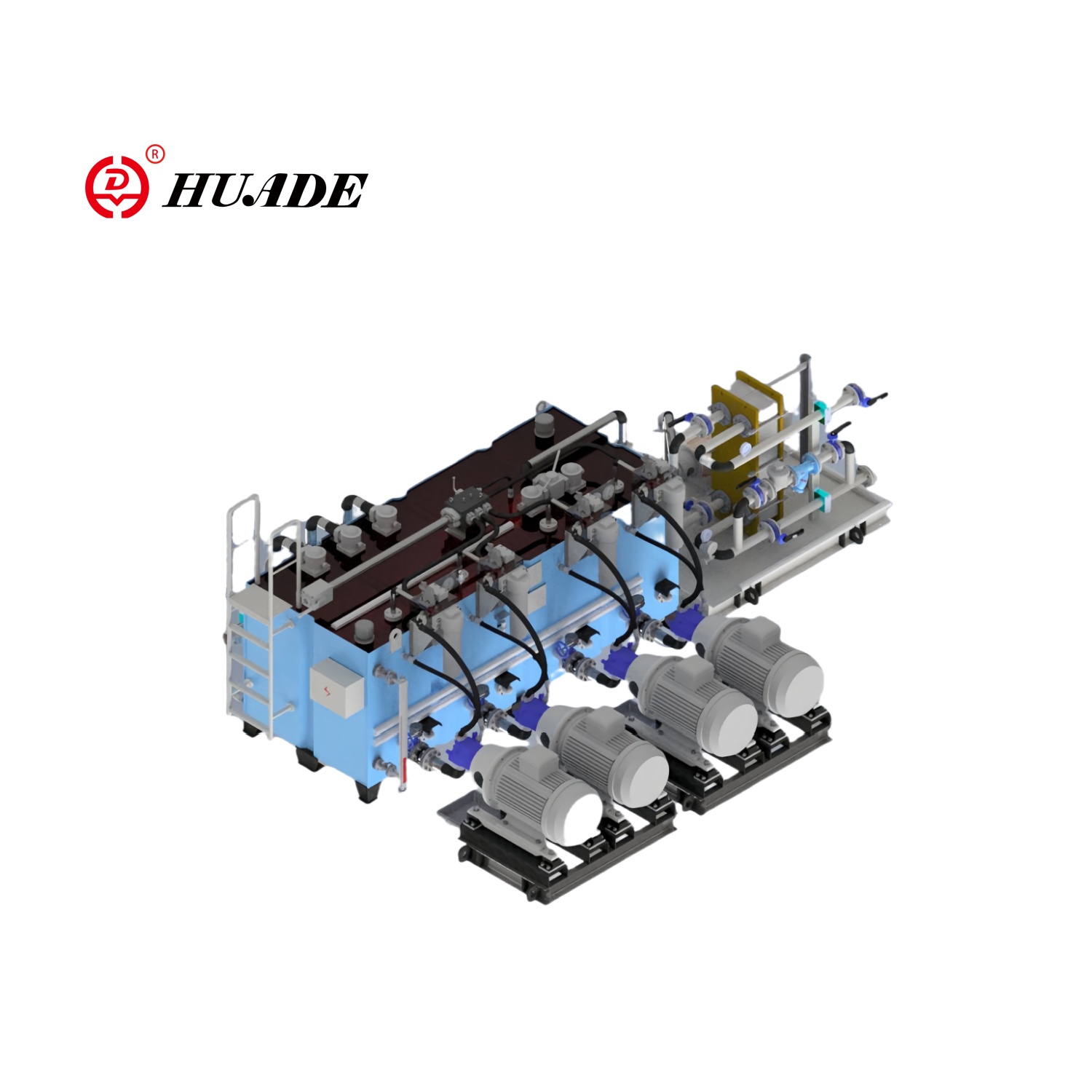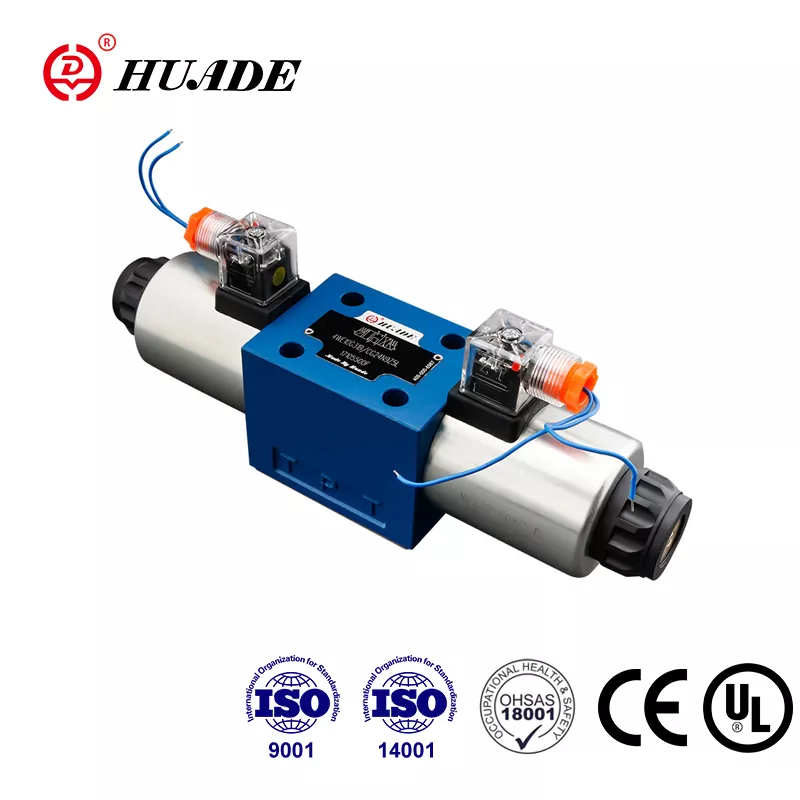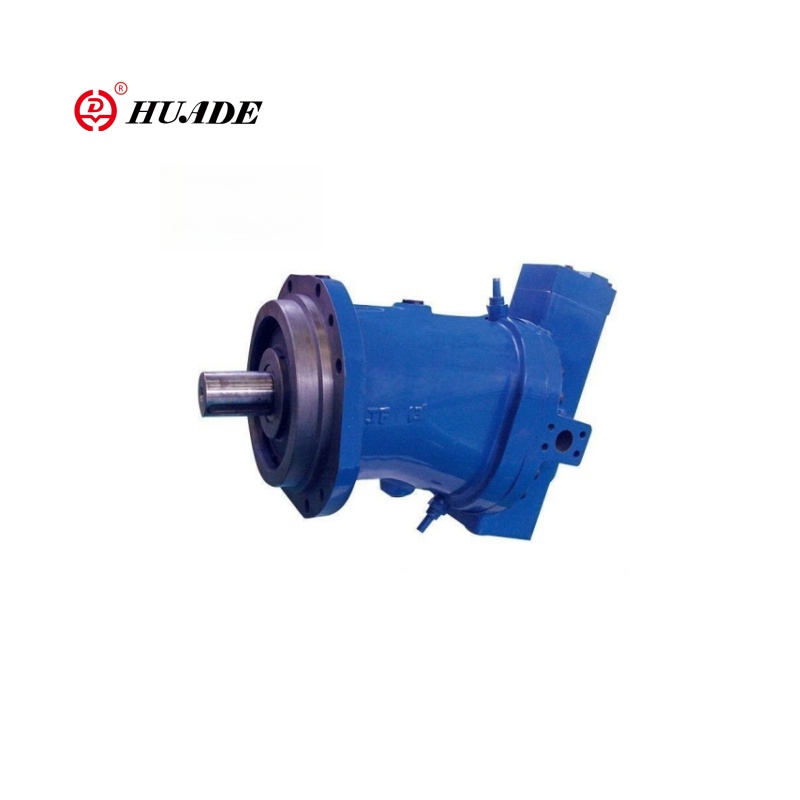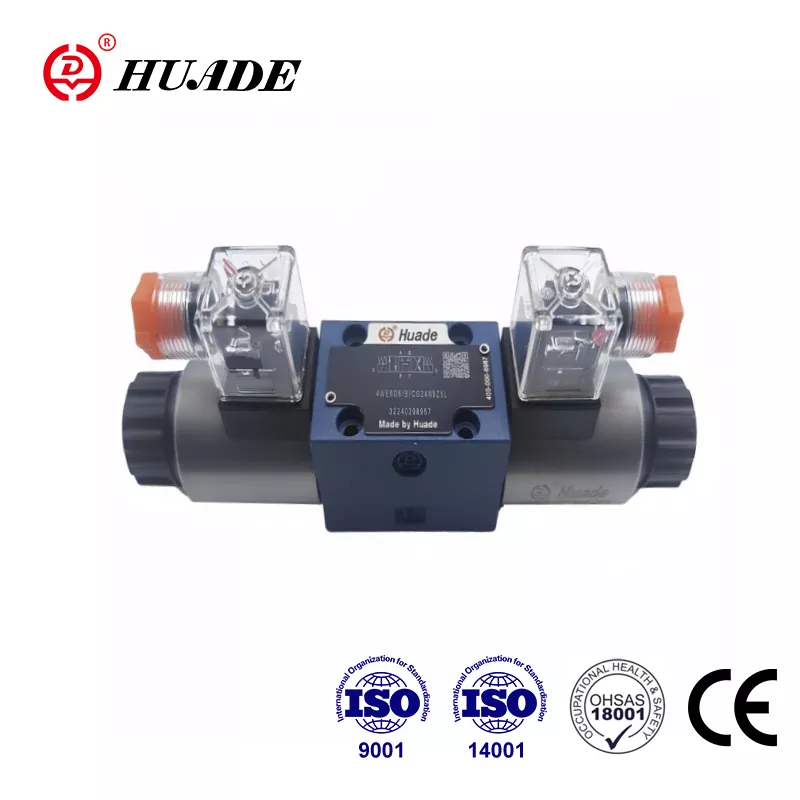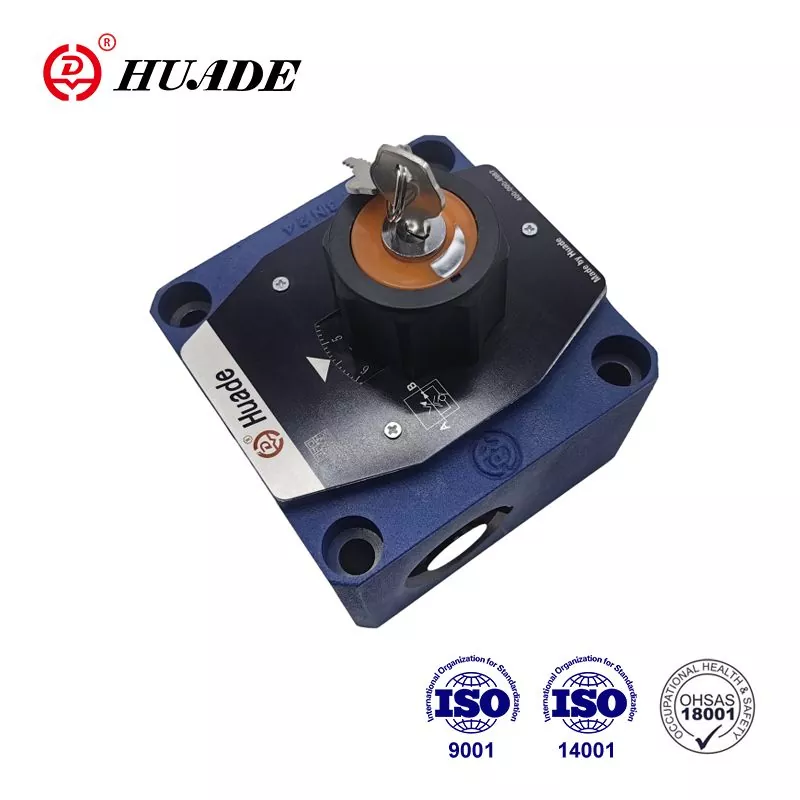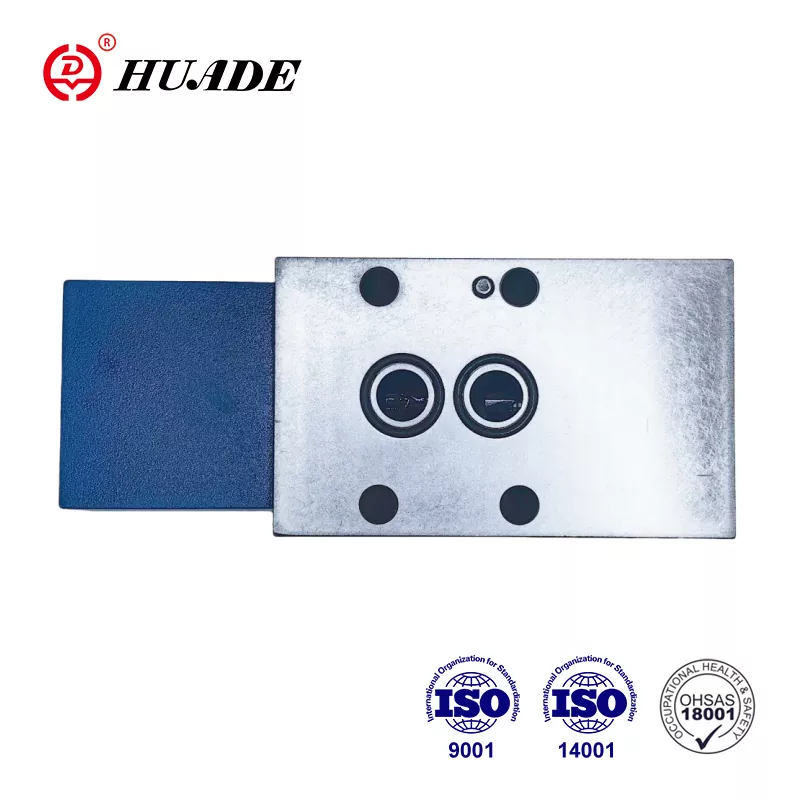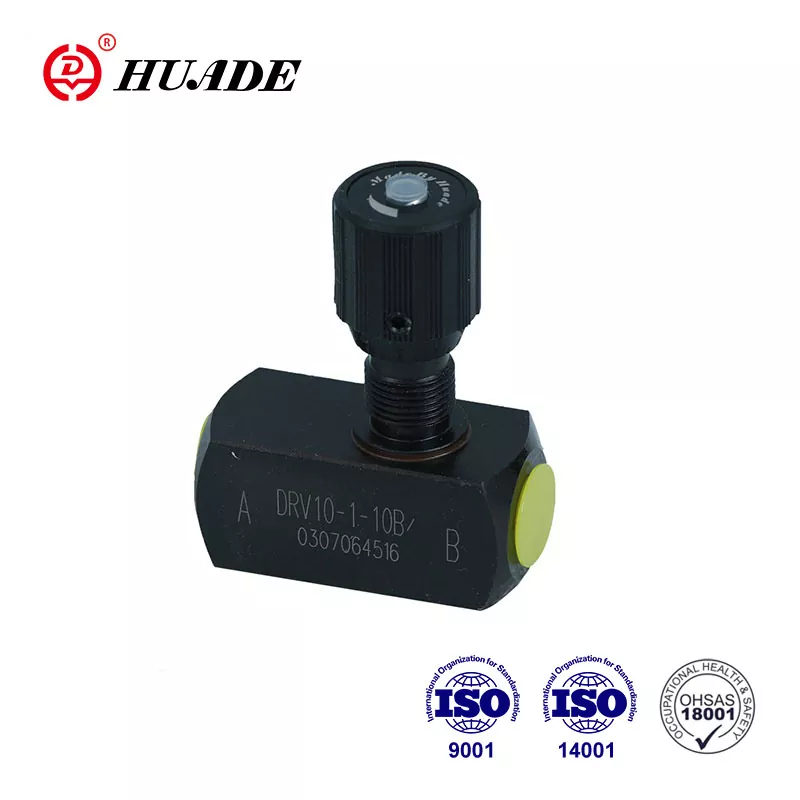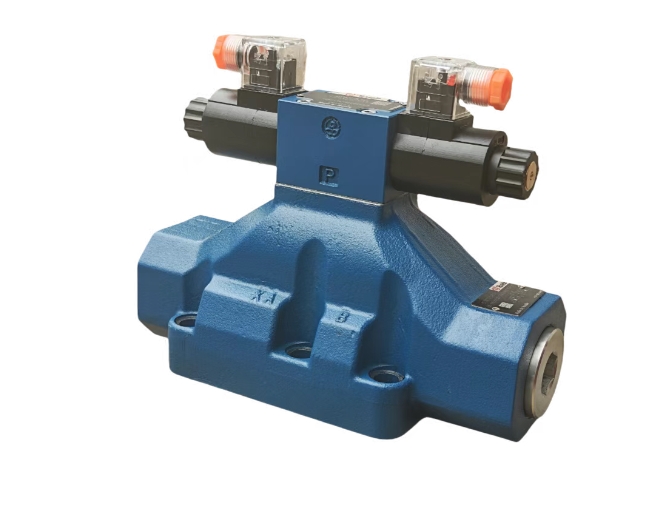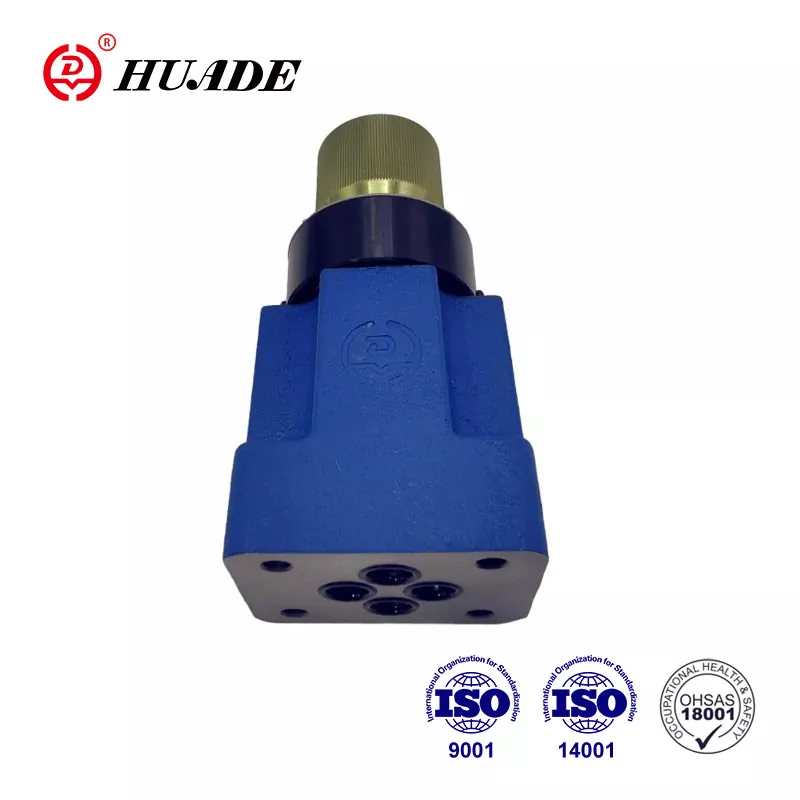When you're working with heavy industrial machinery, understanding how fluid power moves through your system is essential. At the heart of many high-flow hydraulic systems sits a critical component called the directional control valve, specifically the WH series from Bosch Rexroth. These valves might not look impressive at first glance, but they're doing some serious heavy lifting in factories and industrial settings around the world.
What Makes Directional Control Valves So Important
Think of a directional control valve as a traffic cop for hydraulic fluid. Its main job is to decide where the fluid goes, which directly controls how your machinery moves. Whether you're starting, stopping, speeding up, or changing the direction of a hydraulic cylinder, the directional control valve is making it happen.
The WH type specifically refers to pilot-operated directional control valves that use hydraulic pressure to control the main flow. This matters more than you might think. When you're dealing with high flow rates and large volumes of fluid, a simple direct-operated valve just doesn't have enough muscle to get the job done. The forces acting on a large valve spool are enormous, and that's where pilot operation becomes necessary.
Bosch Rexroth designed their WH series to handle exactly these demanding situations. These valves can manage pressures up to 350 bar and flow rates reaching 1100 liters per minute. To put that in perspective, we're talking about moving enough hydraulic fluid to power massive industrial presses, heavy molding equipment, and large material handling systems.
How WH Series Directional Control Valves Actually Work
The beauty of the WH directional control valve lies in its two-stage design. Instead of trying to move a large, heavy spool directly, the system uses a small pilot valve to control a much larger main valve. It's power amplification in action.
Here's how it works in practice. The pilot stage uses a small amount of hydraulic pressure to shift a small valve spool. This creates a pressure difference that acts on the ends of the much larger main spool. That pressure difference generates enough force to overcome the fluid forces and friction, allowing the main spool to shift position and redirect the full system flow.
The WH designation tells you this is purely hydraulic pilot control. All the control signals come from hydraulic pressure sources, not electrical solenoids. This makes WH valves particularly valuable in environments where electrical systems might be problematic, like underwater applications, extreme temperatures, or explosive atmospheres.
Inside the valve body, you'll find a precision-machined bore where the hardened steel spool slides back and forth. The spool has carefully designed lands and grooves that line up with ports in the valve body. As the spool moves, it opens and closes these flow paths, directing fluid to different actuators or back to the tank.
Different Configurations for Different Needs
Directional control valves come in various configurations, and understanding the terminology helps when selecting the right valve. The numbers you see in valve descriptions refer to the number of ports and positions.
A four-way, three-position valve (written as 4/3) has four fluid connections and three distinct operating positions. The four ports typically include pump supply, tank return, and two work ports that connect to your actuator. The three positions usually include two active positions for moving your cylinder or motor in either direction, plus a center position.
That center position matters more than many people realize. In a closed center configuration, all flow stops when the valve returns to center. This works well with fixed displacement pumps and when you need precise position holding. An open center allows pump flow to return to tank in the neutral position, reducing heat generation but potentially allowing your actuator to drift under load. Tandem center configurations offer a middle ground, unloading the pump while blocking the actuator ports.
The WH series offers all these center conditions and more. You can order valves with spring centering, where springs push the spool back to neutral, or pressure centering, where hydraulic pressure keeps the spool centered. Some applications need spring offset configurations or hydraulic detents that hold the spool in whatever position it was last commanded to.
Technical Specifications That Matter
When you're comparing directional control valves, certain specifications tell you what the valve can actually do in your system. The WH series covers nominal sizes from NG10 through NG32. That nominal size directly relates to how much flow the valve can handle.
An NG10 valve might handle 200 to 300 liters per minute, which suits medium-sized machinery. Step up to NG32, and you're looking at that 1100 liters per minute maximum flow capacity. This larger size is what you'd specify for the biggest industrial presses or high-speed production equipment.
The 350 bar maximum working pressure rating puts WH valves in the high-performance category. Many industrial systems operate at 200 to 250 bar, so having that extra pressure capacity provides a safety margin and allows the valve to work in the most demanding circuits.
All WH directional control valves mount according to ISO 4401 standards. This international standard defines exactly where the ports are located and how the mounting surface is machined. Why does this matter? Because it means you can potentially swap out a Bosch Rexroth valve for a Parker or Eaton equivalent without changing your manifold or plumbing. This standardization saves enormous amounts of time and money in system design and maintenance.
The valves work with mineral oil or phosphate ester hydraulic fluids across a temperature range from negative 30 to positive 80 degrees Celsius. This broad operating window covers most industrial environments without requiring special temperature compensation.
Real-World Applications Where WH Valves Excel
Walk into any heavy manufacturing facility and you're likely to find WH series directional control valves at work. Steel mills use them to control massive forming presses. Injection molding plants rely on them for the high-force clamping systems that hold molds closed under extreme pressure.
Large machine tools present another common application. When a CNC machining center needs to rapidly position a heavy table or clamp a workpiece, a WH directional control valve provides the decisive, powerful switching action required. The valve's ability to handle high flow rates means these movements happen quickly, reducing cycle time and increasing productivity.
Material handling equipment like hydraulic elevators and lifting platforms also benefit from WH technology. These applications demand reliability above almost everything else, and the simple, robust design of a pilot-operated directional control valve delivers exactly that.
What makes WH valves particularly suitable for these applications is their tolerance for less-than-perfect operating conditions. Industrial hydraulic systems often can't maintain the ultra-clean fluid conditions that more sophisticated proportional valves require. WH valves work reliably with hydraulic fluid cleanliness around ISO 4406 20/18/15, whereas proportional valves might need 19/16/13 or better. That difference in filtration requirements translates directly to lower operating costs and longer service intervals.
Comparing WH Valves to the Competition
The industrial directional control valve market includes several major players beyond Bosch Rexroth. Eaton's Vickers division offers the DG3V-10 series for hydraulic pilot operation and DG5V-10 for solenoid pilot operation. These compete directly with WH and WEH valves, offering similar flow capacities and pressure ratings.
Parker Hannifin produces large pilot-operated valves in their D81VW series and broader D-series lineup. Like the others, these valves conform to ISO 4401 mounting standards and deliver comparable performance.
The interesting thing about this competitive landscape is how similar the top-end specifications have become. All three major manufacturers offer valves rated for 350 bar pressure and 1100 liters per minute flow. They all follow the same mounting standards. This convergence reflects market demands for interchangeability and has created a situation where competition happens more on secondary factors like delivery time, technical support, and specific configuration options rather than pure performance limits.
Asian manufacturers have also entered the market with ISO 4401 compatible valves. Companies like Huade and Shanghai Lixin offer WH-compatible products at competitive prices, particularly appealing to buyers in rapidly industrializing regions. While these alternatives may not carry the same brand recognition, they follow the same basic design principles and mounting standards.
Maintenance Considerations and Common Issues
One significant advantage of WH series directional control valves is their relatively simple maintenance profile. Unlike sophisticated proportional valves with their tight tolerances and complex feedback systems, traditional pilot-operated valves are fairly forgiving.
The most common failure mode is spool sticking, usually caused by contamination in the hydraulic fluid. Tiny particles can accumulate in the small clearances between spool and bore, preventing smooth movement. Regular fluid changes and adequate filtration prevent most of these issues.
Internal leakage develops over time as normal wear increases the clearance between spool and bore. This shows up as slower actuator speeds, reduced force, and increased heat generation. When internal leakage becomes excessive, the only real fix is valve replacement. The cost of rebuilding typically exceeds the cost of a new valve for most sizes.
External leakage from seals or fitting connections is usually easier to address. Many seals can be replaced without specialized tools. However, if the spool itself is damaged in the sealing area, replacement becomes necessary.
Pilot supply pressure deserves special attention on WH valves. Since the pilot circuit controls the main spool position, any problems with pilot pressure directly affect valve function. Whether using internal pilot supply from the main pump or external pilot supply from a separate source, that pressure must remain stable and adequate for reliable shifting.
The initial cost of a quality directional control valve can seem significant. Mid-range Bosch Rexroth assemblies might run around 450 dollars, with larger or more complex configurations costing more. However, the total cost of ownership depends heavily on reliability and service life. WH valves earn their keep through years of dependable operation with minimal attention.
The Future of Directional Control Technology
The hydraulic valve industry isn't standing still. Two major trends are reshaping the landscape, though neither has made WH style valves obsolete yet.
Proportional directional control valves offer continuously variable flow control rather than simple on-off switching. By varying the input signal, you can precisely control actuator speed and force. This brings significant advantages for applications requiring smooth motion or exact positioning. However, proportional valves demand much cleaner hydraulic fluid, require regular calibration, and generally cost more to purchase and maintain.
Digital hydraulics represents a more fundamental shift in approach. Instead of using analog valves like the WH series or proportional valves, digital hydraulic systems use arrays of fast-switching on-off valves. By rapidly pulsing these valves, the system can achieve precise control that rivals or exceeds proportional valves while maintaining the simplicity and robustness of on-off components.
Digital hydraulics promises major energy savings by eliminating many of the throttling losses inherent in traditional systems. The technology also provides built-in redundancy since multiple small valves can compensate if one fails. Production costs could drop significantly once volumes increase, since digital valves are simpler to manufacture than precision proportional valves.
Despite these advances, traditional WH directional control valves maintain important advantages. They require less sophisticated control electronics, tolerate contamination better than proportional valves, and integrate seamlessly into existing systems built around ISO 4401 standards. For applications that need robust, high-flow switching without continuous control, WH valves remain the most cost-effective solution.
Bosch Rexroth recognizes these competing pressures and has developed their Connected Hydraulics strategy. This approach adds sensors and digital interfaces to traditional hydraulic components, bringing them into Industry 4.0 environments without requiring complete system redesigns. A WH valve with integrated pressure sensors and position monitoring can provide valuable data for predictive maintenance while still performing its fundamental switching function.
Making the Right Valve Selection
Choosing between a traditional WH directional control valve and newer technologies depends on your specific application requirements. For new systems requiring precise speed control or complex motion profiles, proportional valves or digital hydraulics make sense despite their higher costs and maintenance demands.
For replacement parts in existing systems, WH valves usually represent the most practical choice. They drop into standard ISO 4401 mounting patterns, work with existing pilot circuits, and provide proven reliability. Focus your supplier selection on companies offering good technical support and the specific configuration options you need, like adjustable switching times or pressure centering.
When contamination control is difficult or impossible to achieve, traditional pilot-operated directional control valves clearly outperform proportional alternatives. Industries like mining, forestry, and demolition often fall into this category. The WH valve's larger internal clearances and simpler design tolerate conditions that would quickly destroy more sophisticated controls.
The key is matching valve technology to actual system needs rather than automatically choosing the newest option. WH series directional control valves have remained in production for decades because they solve real problems effectively. They'll continue serving industrial systems as long as applications exist that value simplicity, robustness, and high-flow capacity over continuous variable control.
Understanding how these valves work, what they do well, and where alternatives might serve better helps you make informed decisions for your specific hydraulic systems. Whether you're maintaining existing equipment or designing new installations, the WH directional control valve deserves consideration as a proven, reliable solution for high-power fluid control applications.
